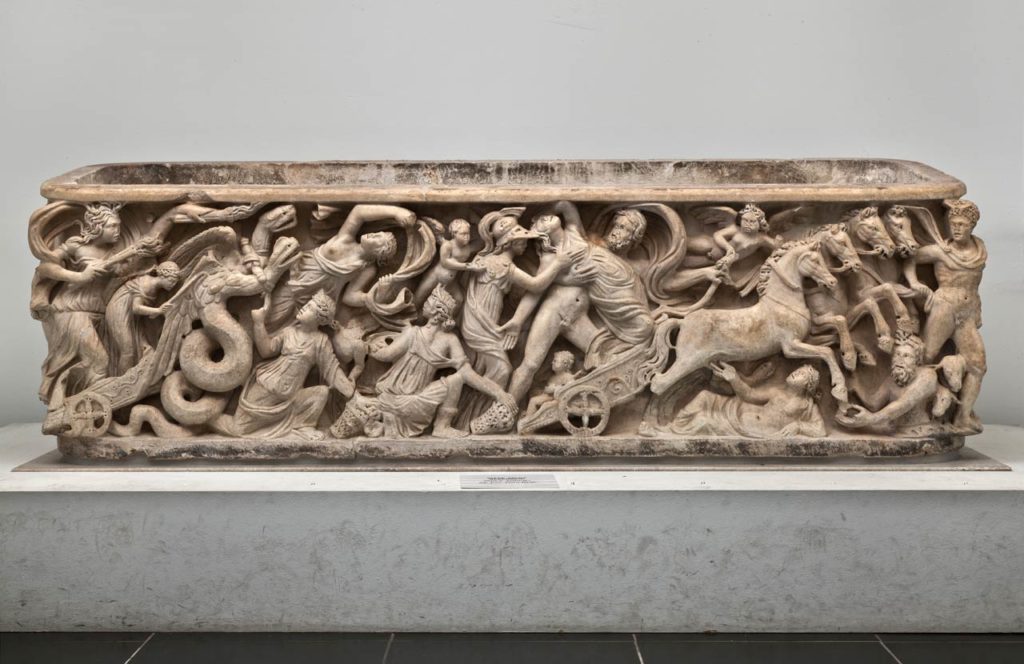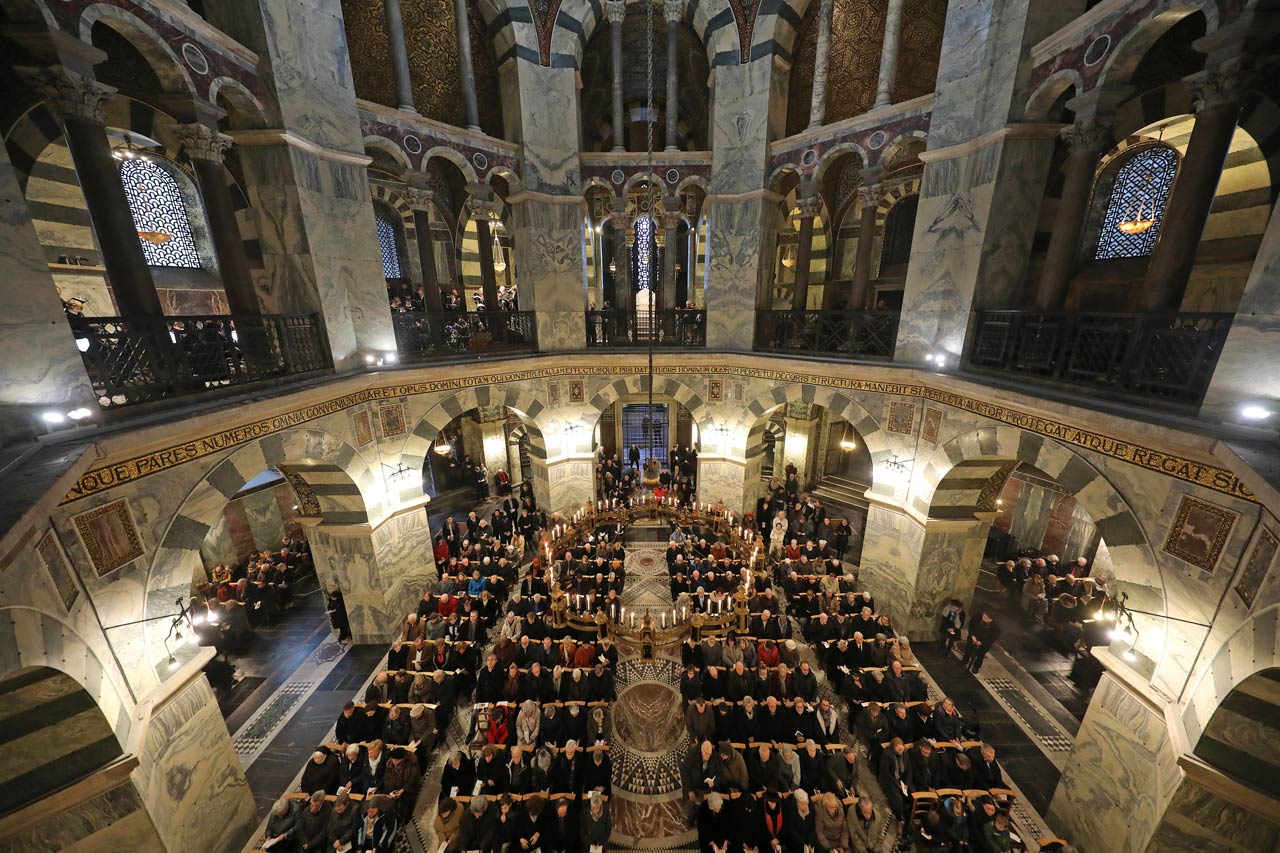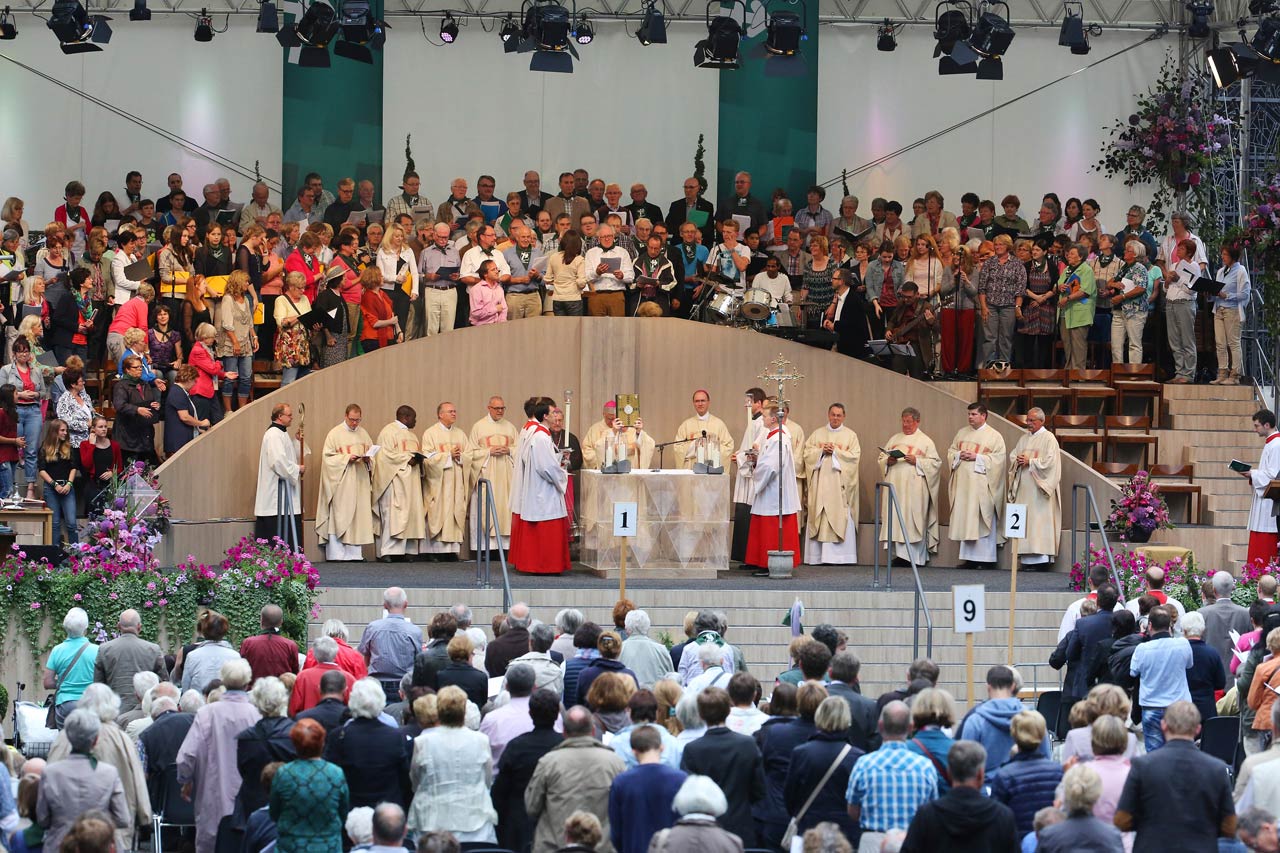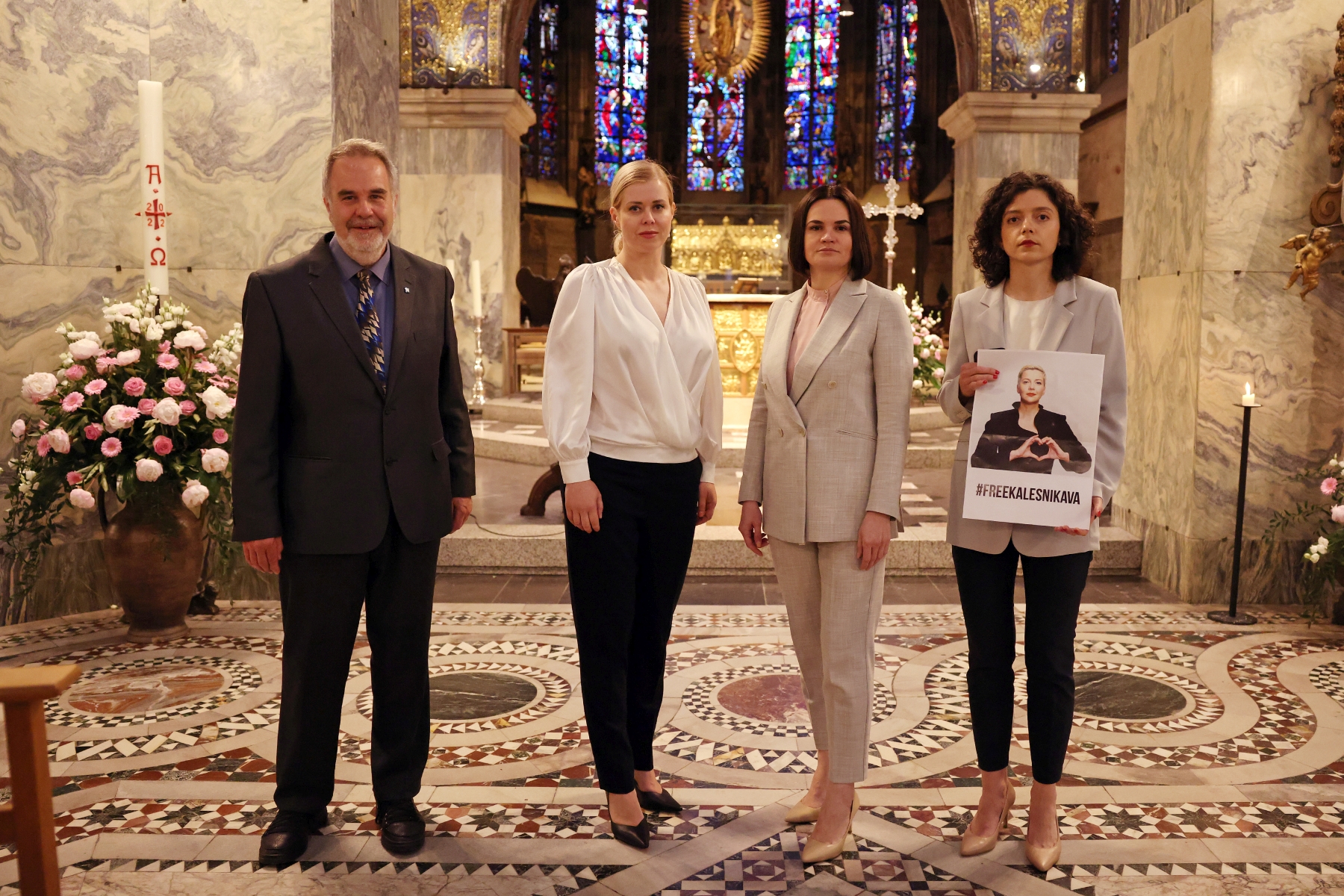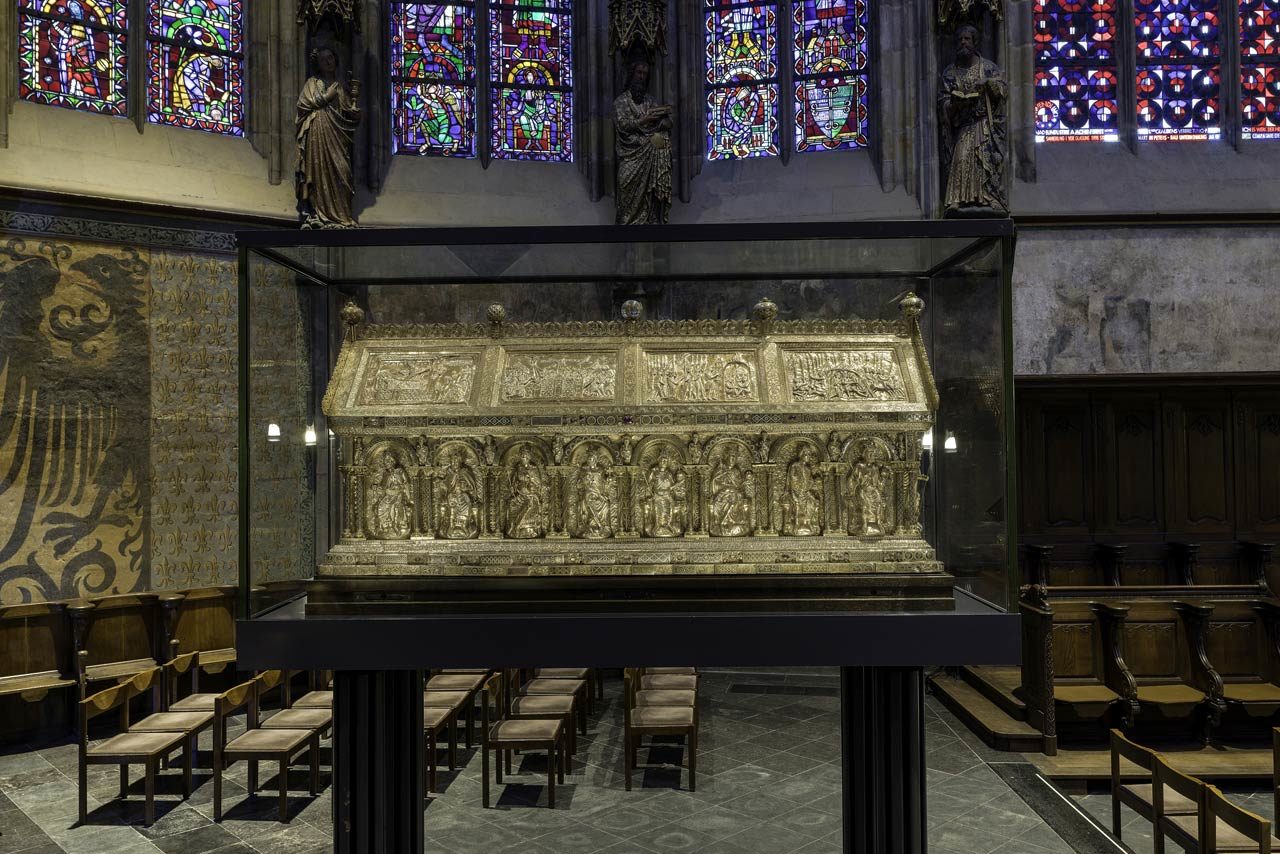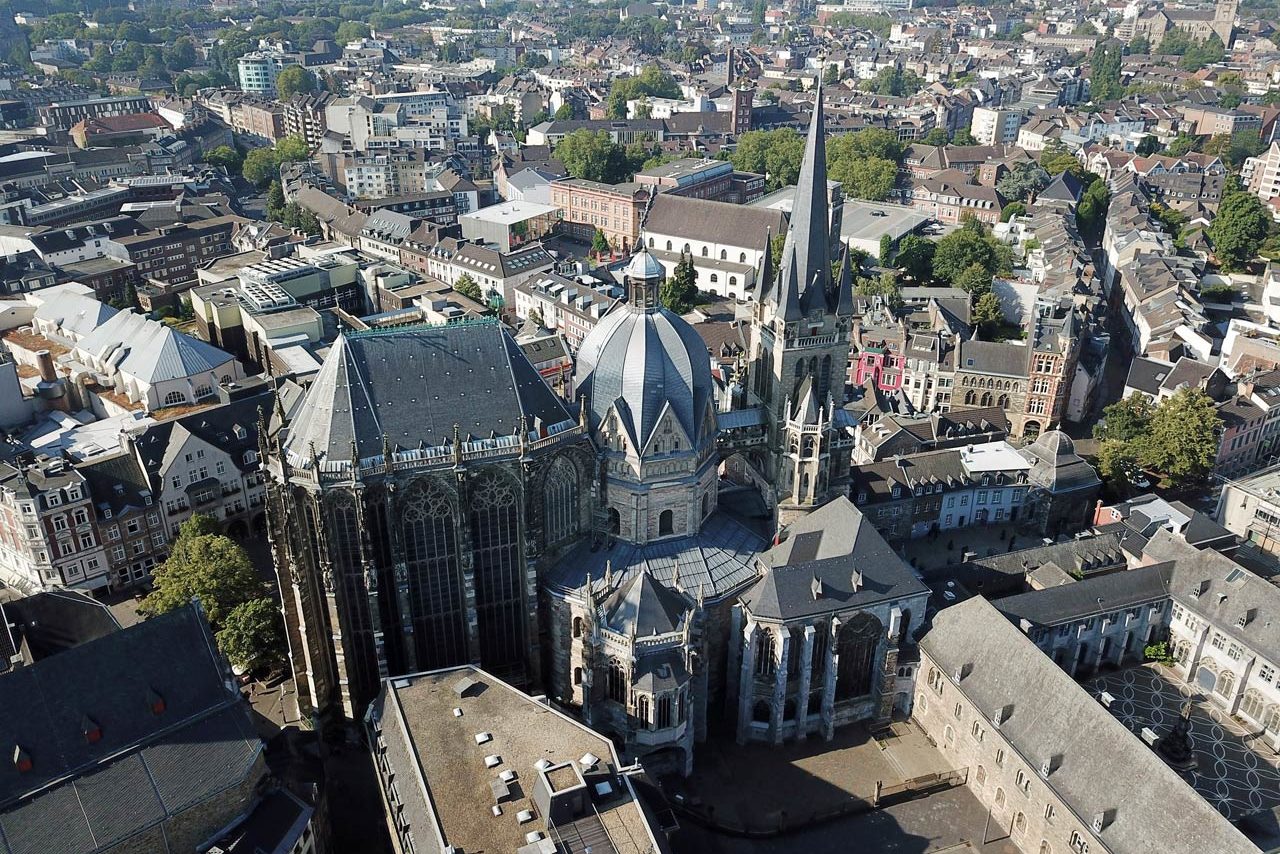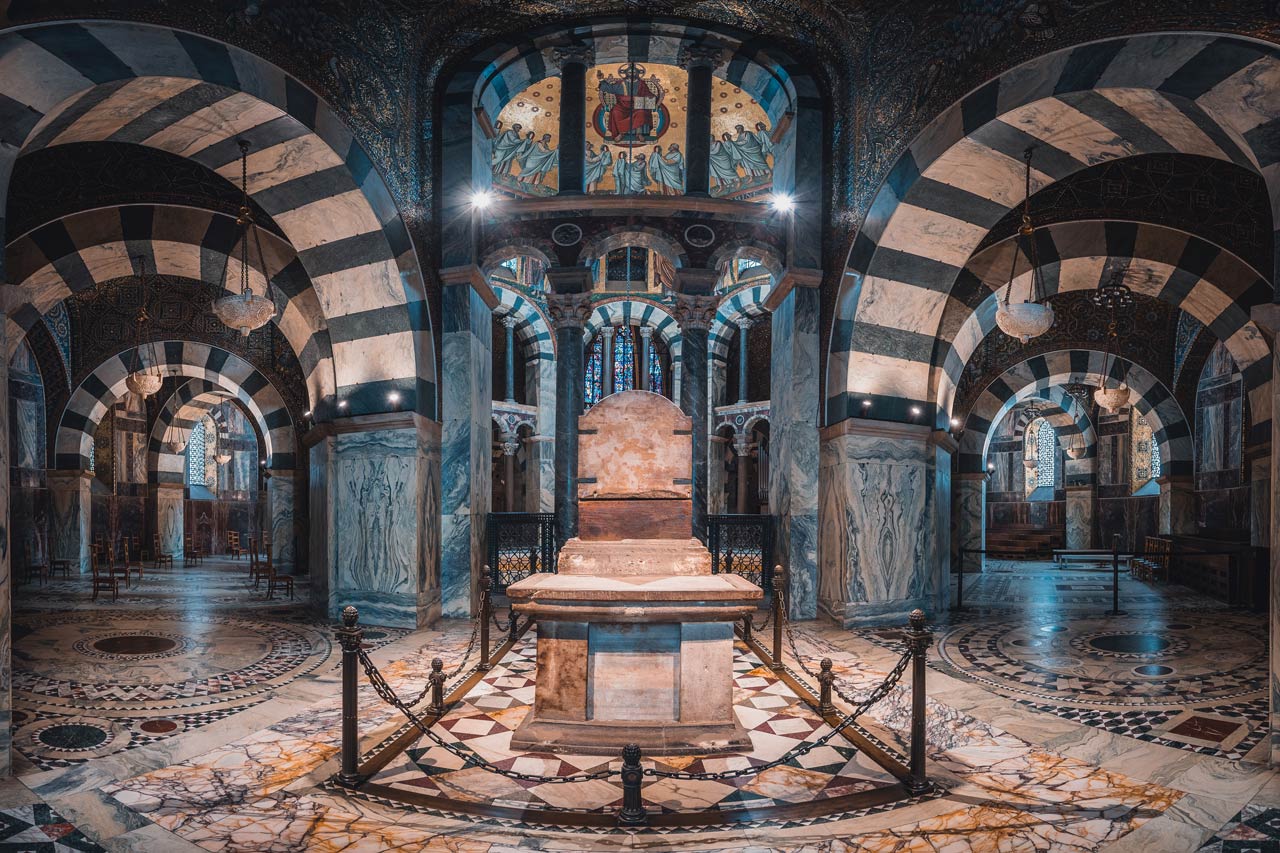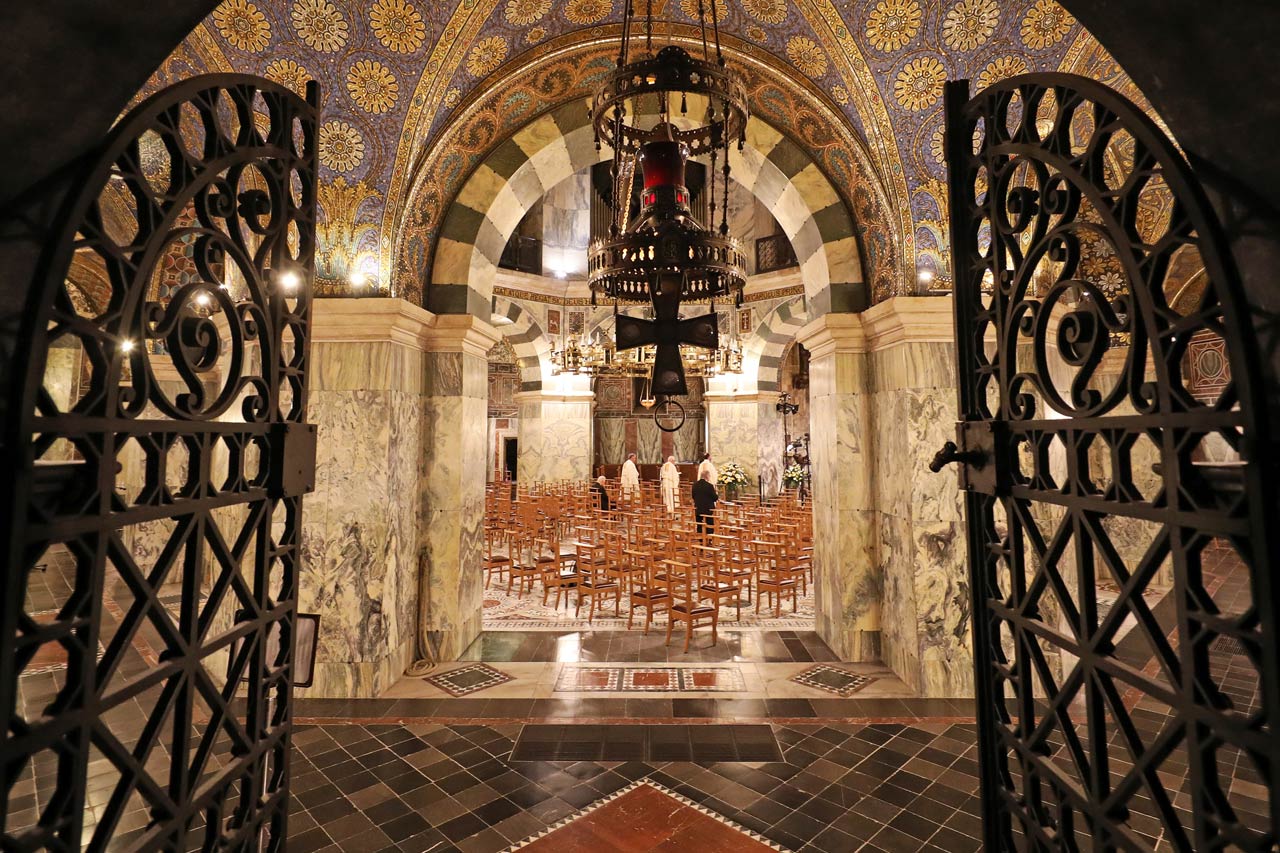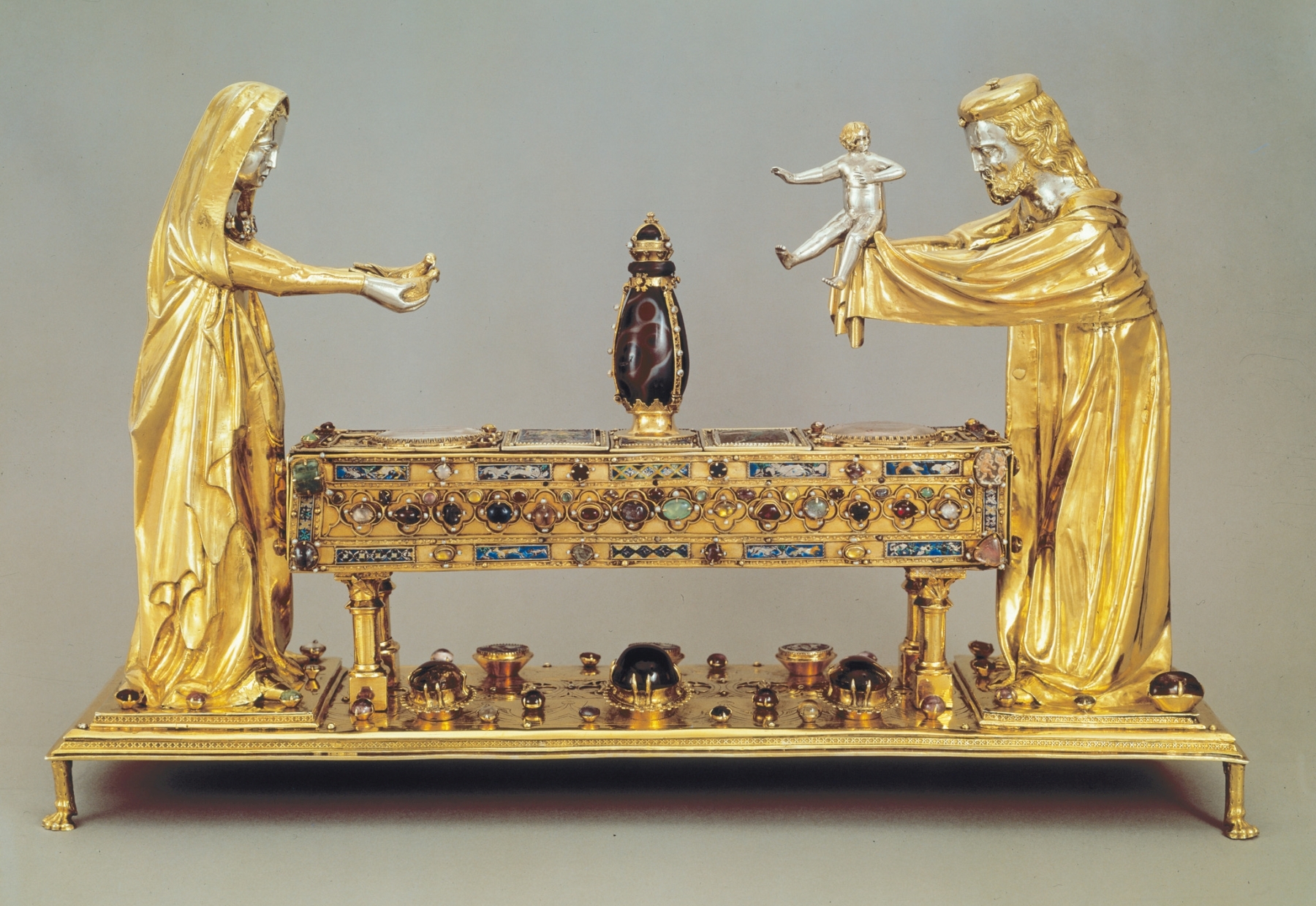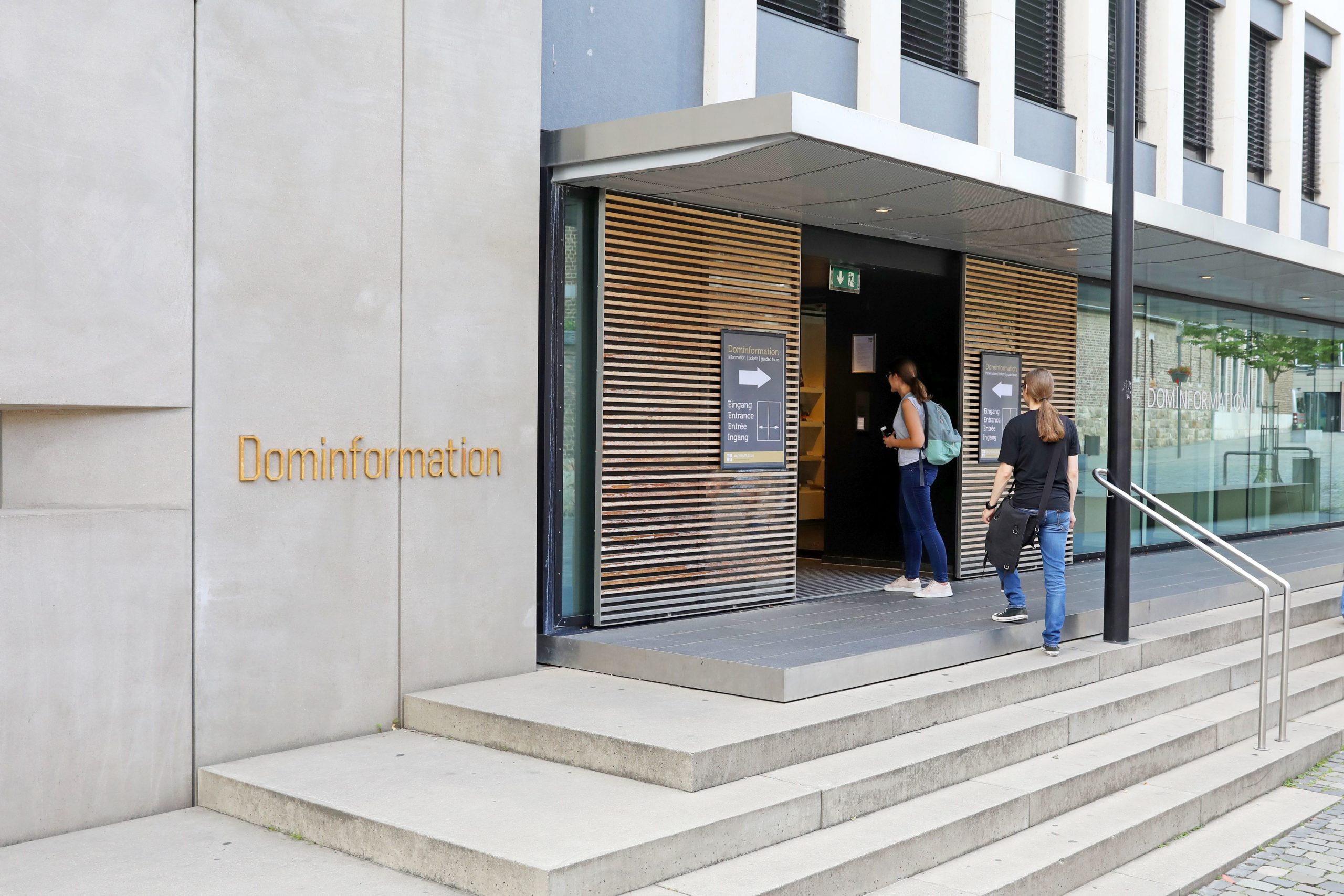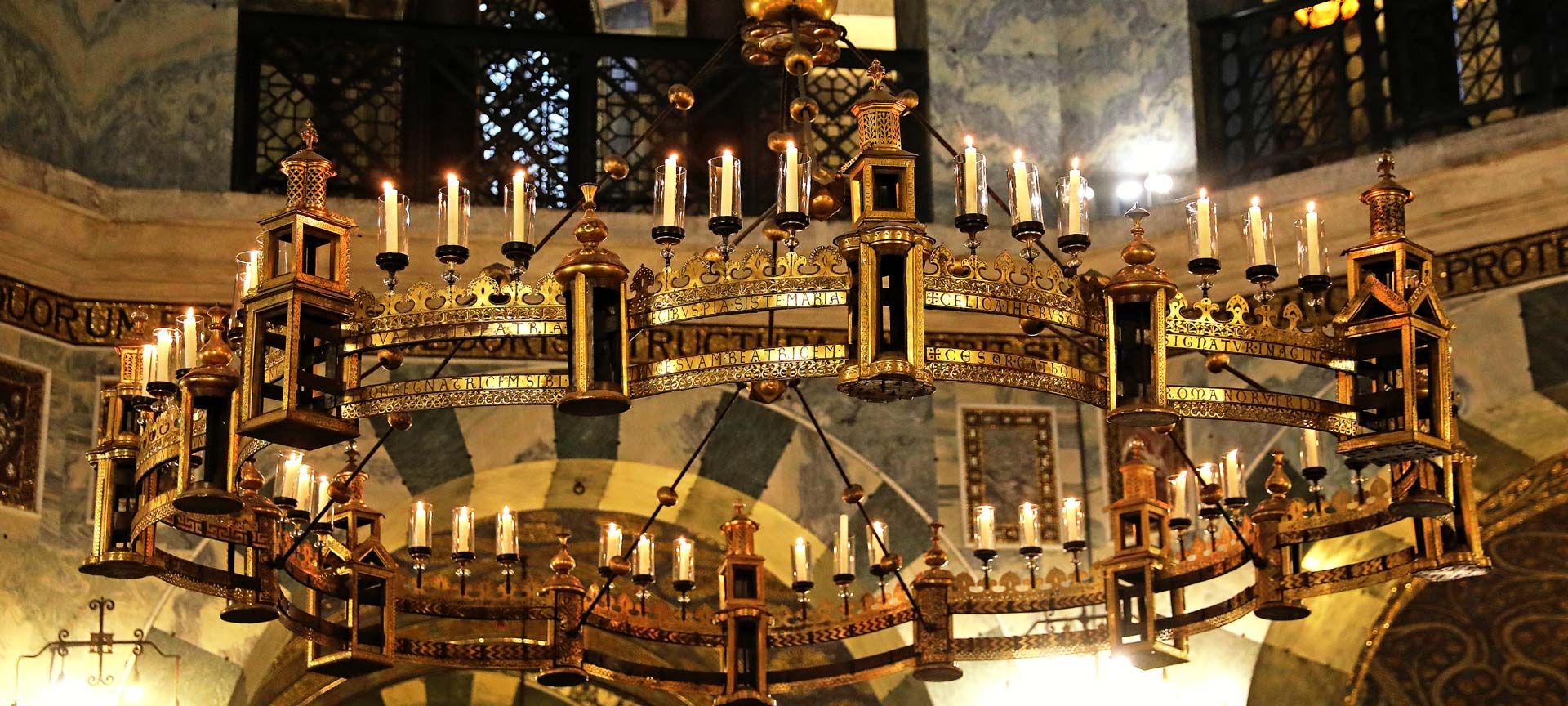A place of history
Aachen Cathedral is one of the best-preserved buildings from the Carolingian period. Charlemagne’s Church of St Mary is considered an architectural masterpiece that combines Western and Eastern Roman building traditions. The central Rotunda (Octagon) was presumably built in only about ten years starting in 798 (+/- 5 years). As the final resting place of Charlemagne, the coronation church of the Roman-German kings, the European Pilgrimage Church and the Cathedral Church of the Diocese of Aachen, the building combines ecclesiastical function and historical tradition to this day.
It was the first cultural site in Germany to be inscribed in UNESCO’s World Heritage List in 1978.
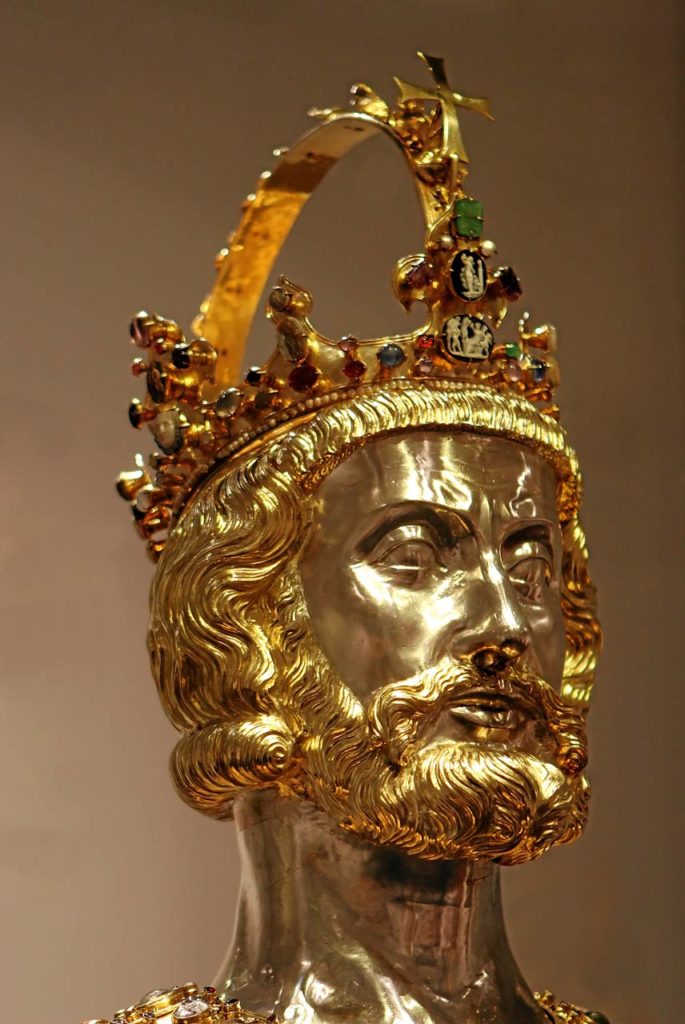
Charlemagne
The construction of Charlemagne’s palace marked the advent of his intellectual and political centre of power. To this day, many traces of the most important medieval ruler can be found in and around the Cathedral and Aachen Town Hall.
Architecture and history of the building
The floor plan and building design of Aachen Cathedral bear witness to its changing significance and use over the centuries. The Carolingian building, a domed octagon, is largely intact. The Octagon is surrounded by a two-storey, sixteen-sided ambulatory. The imperial throne is to be found in the western gallery on the upper storey of the Palatine chapel (Hochmünster). The Gothic choir adjoins it to the east.
To learn more about the architecture, decor and history of Aachen Cathedral, please continue reading.
Aachen Pilgrimage
Since 1239, the four cloth relics have been kept in the Shrine of the Virgin Mary, and since 1349 they have been displayed to the faithful from Europe and all over the world every seven years. The next Aachen Pilgrimage will take place from 9 to 19 June 2023.
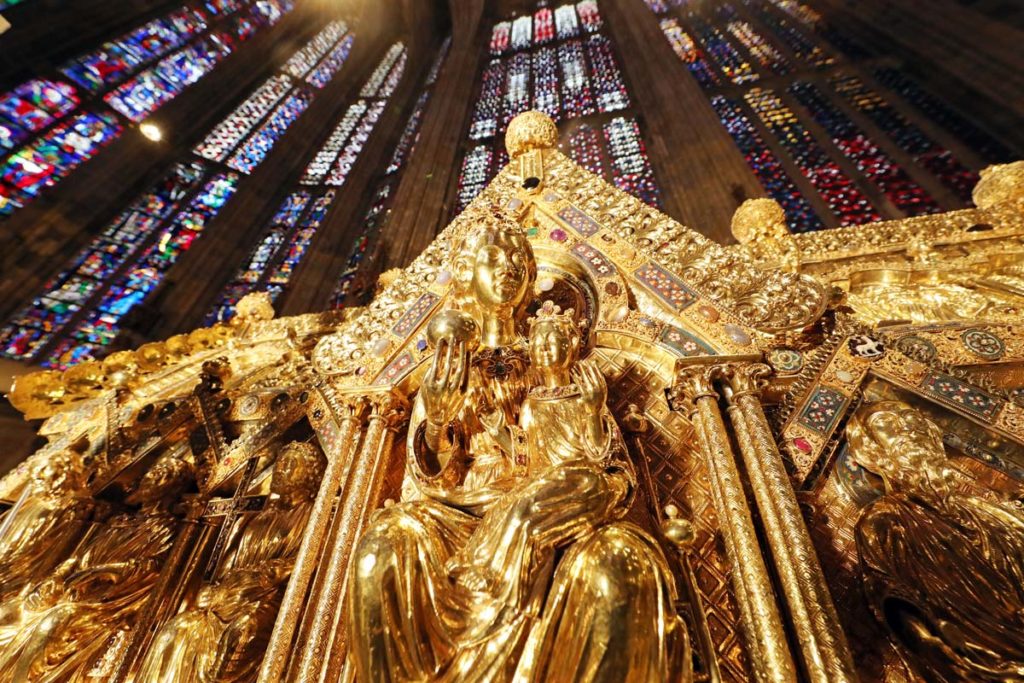
Coronation church and imperial throne
With the coronation of King Otto I in Aachen in 936, the function of St Mary’s Church as the coronation site of the German kings was established. Until 1531, 30 kings and 12 queens were crowned in Aachen’s collegiate church. The ceremony on the marble throne in the Hochmünster was considered to symbolise “taking possession” of the empire.
Numerous treasures, such as the sceptre of Richard of Cornwall or the crown of the Bust of Charlemagne, were made especially for the coronation ceremonies and passed into the possession of the Church as royal gifts. To this day, they are an important part of the Aachen Cathedral Treasury.
Aachen Cathedral Treasury
The Aachen Cathedral Treasury houses the most important medieval church treasure preserved in a single church north of the Alps.
The significance of the treasures is closely linked to their actual purpose: the furnishings of St Mary’s Church, founded by Charlemagne around 800, and the celebration of its liturgy. The treasury collection has grown over the years thanks to the significance of St Mary’s Church as the burial place of Charlemagne and as the coronation church of the German kings and, to this day, as a European place of pilgrimage.
Liturgical objects, manuscripts, book bindings, reliquaries, vestments and other paraments, sculptures, panel paintings and episcopal regalia document the long history of church life.
In the Treasury, about 130 works of art are exhibited on three floors arranged by themes representing the different functions of St Mary’s Church.
